August 20, 2025
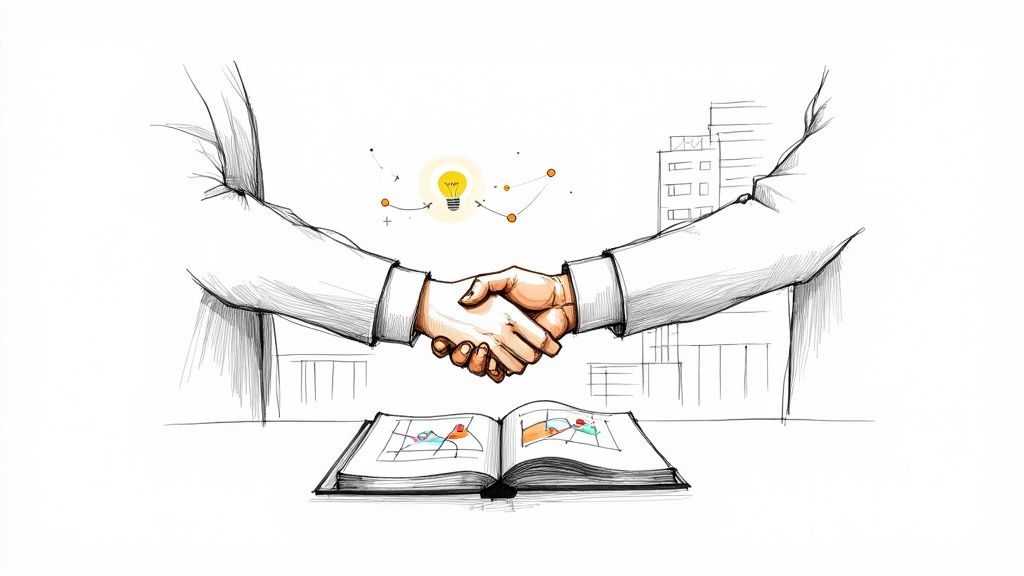
Getting a corporate sponsorship isn't about asking for a handout; it's about proving you can deliver real, measurable value to a brand. You have to shift your mindset from "I need money" to "I have an opportunity for you." It all starts with being crystal clear about who your audience is, what makes your event or project special, and how a partnership can be a win for them.
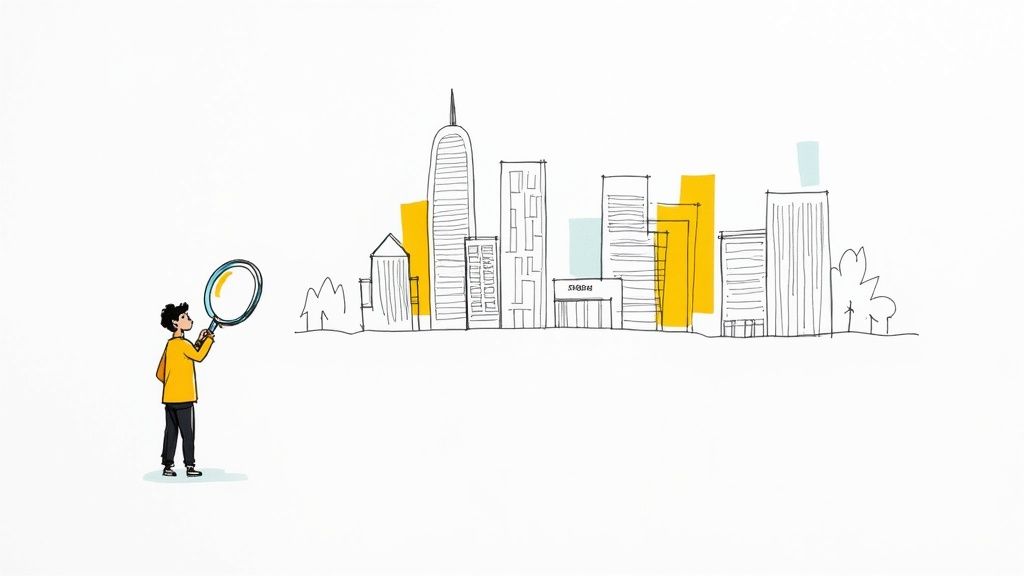
Before you even dream of drafting a list of potential sponsors, you have to get your own house in order. This foundational work is what makes the difference between a pitch that gets a response and one that lands straight in the trash. It’s all about knowing your assets inside and out so you can frame them in a language that speaks directly to a company's marketing goals.
Remember, successful sponsorship is a business deal. Brands are on the hunt for smart marketing opportunities, and you're offering them a unique vehicle to reach the right people.
First things first: What do you offer that a sponsor can't get anywhere else? This is your unique value proposition, the absolute core of your pitch. It’s got to be more than just a fluffy mission statement. It needs to be a sharp, concise explanation of the specific benefits a partner will get by working with you.
Think beyond just "we'll put your logo on our t-shirts."
For instance, instead of saying, "We're a tech conference for developers," try reframing it from a sponsor's perspective: "We offer direct access to 500+ mid-to-senior level software engineers—a notoriously hard-to-reach audience for tech recruiters and B2B SaaS companies." See the difference? The second one immediately solves a business problem.
Sponsors aren't just buying your brand; they're buying access to your audience. A vague description like "millennials who care about sustainability" is completely useless to a marketing manager. You need to dive deep and build a detailed audience persona they can instantly recognize and see value in.
Start gathering specific data points. Go beyond the basics and get into psychographics—what they value, what they care about, and where they hang out online.
The more you know about your audience, the easier it is to sell access to them. A sponsor isn't paying for eyeballs; they're paying for the right eyeballs.
Once you’ve nailed down your value and your audience, you can start building structured sponsorship packages. Don't make the mistake of a one-size-fits-all approach. Offering tiered options (think Platinum, Gold, Silver) allows companies with different budgets and goals to find a way in.
Each tier needs to offer a clear, escalating level of value. It's not just about adding more logo placements for more money. It’s about offering more tangible benefits that solve real business problems.
Your packages should be a mix of benefits that cater to various corporate objectives, whether it's brand awareness, lead generation, or positioning themselves as industry experts.
Putting in this prep work transforms your request from a simple ask for cash into a compelling business proposal. With a sharp value proposition, a detailed audience profile, and well-designed packages, you're finally ready to start finding the right companies to approach.
Blasting out generic emails to a huge list of companies is a surefire way to waste your time. Let's be honest, that scattergun approach rarely works. The real key to landing corporate sponsorship is to think like a detective, not a telemarketer. You're searching for companies where a partnership just makes sense—a natural extension of their brand and marketing goals.
This means you need to shift your thinking from mass outreach to strategic alignment. You aren't just looking for a check; you're looking for a partner. And that kind of relationship starts with some serious, targeted research to build a quality prospect list.
The bedrock of any great sponsorship prospect list is a shared audience and similar values. Start by looking for brands that are already talking to your people, just in a different context.
Let’s say you run a marathon that attracts thousands of health-conscious professionals. Who else is trying to reach that exact demographic? Think about organic food companies, high-tech fitness apparel brands, or even financial planning services.
This alignment is everything. It makes the partnership an easy story for the company to tell its customers. A collaboration that feels authentic and intuitive is always going to be more powerful than one that comes out of left field.
Here are a few places to start your brainstorming:
Don't get star-struck by big names. A smaller, local business that's deeply invested in your community can be a far more valuable and engaged partner than a massive national corporation with no real connection to your world.
Once you have a rough list, it’s time to put on your investigator hat. Your mission is to understand each company’s marketing strategy, recent campaigns, and any corporate social responsibility (CSR) initiatives they have going on. You're gathering intelligence to build an undeniable case for partnership.
Tools like LinkedIn Sales Navigator are fantastic for this. You can quickly pinpoint the right decision-makers—think Marketing Directors or Sponsorship Managers—and see what they’ve been up to. To get your targeting just right, it’s worth exploring some of the top sales prospecting methods to help identify and qualify the best potential sponsors.
Also, don't forget to check out a company's press releases and annual reports. Are they launching a new product aimed at your audience? Did they just announce a major expansion into your city? These are huge green flags, signaling that they have both the budget and the motivation to work with you. For a deeper dive into this whole process, our guide on https://groupos.com/blog/how-to-obtain-sponsorships-from-corporations is a great resource.
A company's past actions are the best predictor of its future ones. When you dig into their previous sponsorship deals, you get a crystal-clear picture of what they value and where they put their money.
Try to answer these questions for each prospect:
Take the global sports market, for instance. A huge part of finding sponsorship is knowing which industries attract the big money. The global sports media rights market is set to blast past $60 billion by 2025, with football (soccer) leading the charge. With 51% of the world's population identifying as fans, it’s an incredibly valuable space.
Here in the U.S., 76% of the 62 million football fans are Gen Z or Millennials—a dream demographic for countless brands. And with the 2026 FIFA World Cup coming to North America, opportunities are about to explode, especially since 67% of U.S. football fans say they view sponsoring brands more favorably. You can find more insights like this on global sponsorship trends on ministryofsport.com.
By doing your homework on what a company already supports, you’re no longer just guessing what they might like. You’re approaching them with an opportunity that perfectly fits their proven investment strategy. This smart, informed approach drastically boosts your odds of not just getting a reply, but starting a genuinely productive conversation.
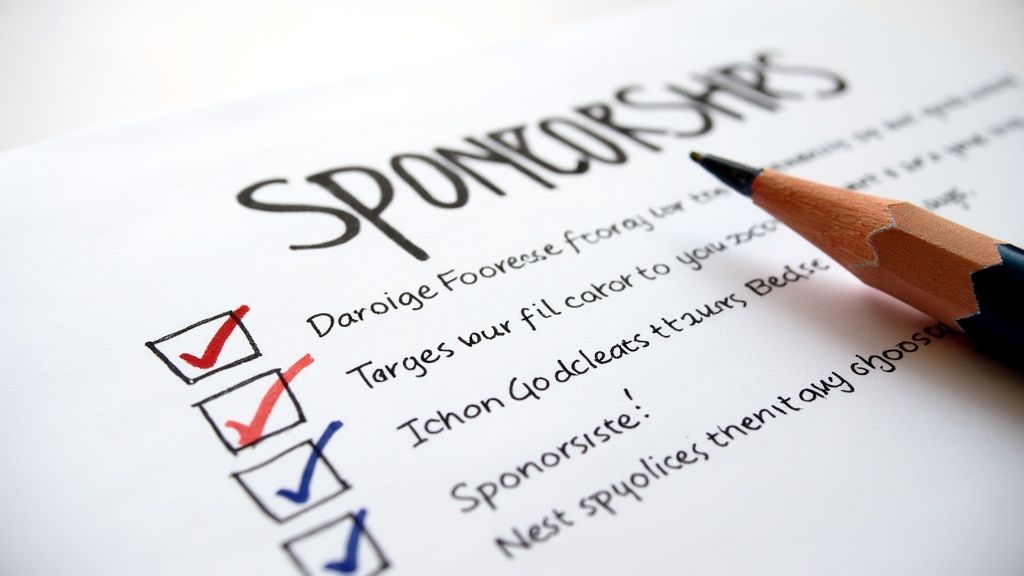
After all that research, this is where it all comes together. Your sponsorship proposal is your single most important sales document, and I can tell you from experience, firing off a generic template is the surest way to get deleted.
A winning proposal isn't a glorified donation request. It’s a rock-solid business case for a partnership. It needs to show you've done your homework and understand what makes the potential sponsor tick. Most importantly, it has to immediately answer their one crucial question: “What’s in it for us?”
You’ve got maybe ten seconds to hook a busy decision-maker. Your executive summary is that hook. It has to be sharp, to the point, and focused entirely on what the sponsor stands to gain. Forget starting with your organization's origin story—lead with their opportunity.
For instance, a weak summary might say, "We are seeking a sponsor for our annual conference." A much stronger, sponsor-focused approach sounds like this: "We offer a direct line to 5,000 highly engaged software developers—a key demographic for your new API tool—to drive both brand awareness and qualified leads."
See the difference? That simple shift frames you as a strategic partner, not someone with their hand out.
Your executive summary should be so compelling that even if they only read that one section, they grasp the core value you're offering. Think of it as your elevator pitch on paper.
All that demographic and psychographic data you gathered? It’s time for it to shine. But don't just dump a list of stats. Your job is to use that data to paint a picture of the exact people a sponsor will connect with.
When you present your audience this way, the opportunity becomes real. The sponsor can literally see their ideal customers in your crowd, which makes the investment feel less like a gamble and more like a no-brainer.
This is the make-or-break section of your proposal. You have to translate the benefits you offer into a clear, undeniable return on investment (ROI). Corporate marketing teams need to justify every dollar they spend, and you need to give them the exact numbers and reasoning to do it.
Go way beyond vague promises of "brand exposure." Get granular with the deliverables. If you've created different sponsorship levels, lay them out here. We have a great guide on how to https://groupos.com/blog/build-winning-event-sponsorship-packages that can help you structure these tiers effectively.
Think in terms of tangible business outcomes they can report back to their boss:
To streamline this whole process and ensure every proposal looks polished, many teams use proposal automation software. These tools are a huge help in creating professional, personalized documents without starting from scratch every time.
Ultimately, your proposal needs to be a persuasive, data-rich document that proves partnering with you is a can't-miss opportunity. When you focus on their needs and spell out the ROI, the conversation shifts from a simple request to a compelling business proposition they can’t ignore.
You've got a killer proposal ready to go. Now comes the real test: getting it in front of the right people. This is where a smart outreach strategy makes all the difference, turning what could be a cold pitch into a warm conversation. Your goal isn't just to get your proposal seen; it's to start a relationship.
A huge mistake I see all the time is attaching the full, detailed proposal to the very first email. Think of it like this: you wouldn't propose on a first date. It's just too much, too soon. Instead, your initial outreach should be a quick, personal email designed to pique their interest and open a door.
The best outreach doesn't even start with an email. It begins long before that, by making your name familiar to them before you ever land in their inbox. This simple act builds a foundation of recognition and makes your eventual ask feel less out of the blue.
So, before you hit "send," get on their radar. Find the company and the specific decision-maker on platforms like LinkedIn.
Doing this shows you're a real person who's genuinely part of their world, not just another random person with their hand out.
Your first email has to be short, personal, and focused on them. Mention something specific you found during your research—maybe a recent product launch, a company award, or a marketing campaign you genuinely admired. This shows you've done your homework.
The only goal here is to get a reply, not to land the sponsorship. Your call-to-action should be simple and low-pressure. Something like asking for a quick 15-minute chat to explore how a partnership could help them connect with their target audience.
This visual breaks down a simple, effective workflow for your initial outreach and follow-up.
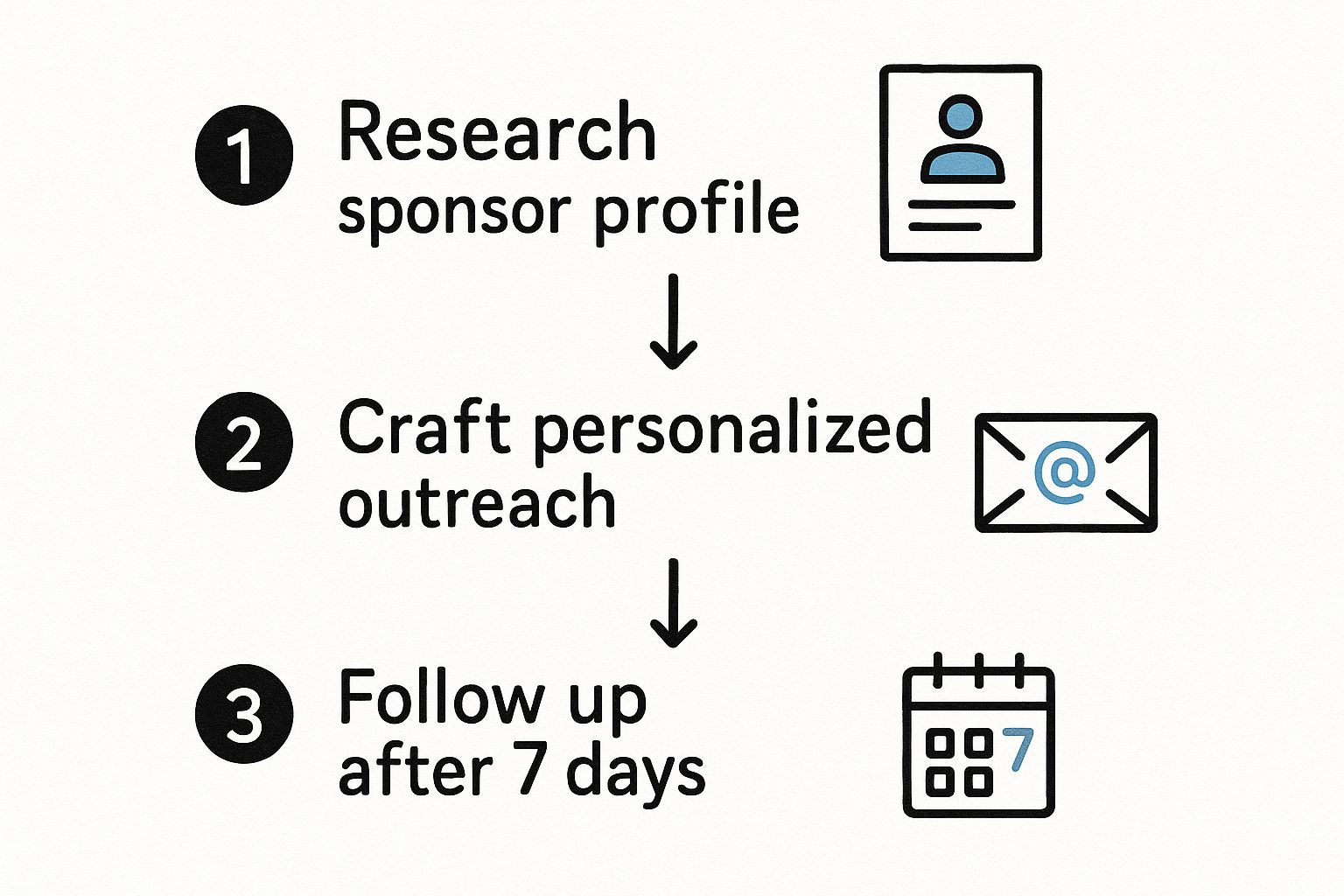
As you can see, the process is all about personalization and polite persistence. Those two things are your secret weapons for cutting through the corporate noise.
Where you reach out can be just as important as what you say. Different channels have their own strengths and weaknesses when it comes to connecting with potential sponsors.
Here’s a quick comparison to help you decide where to focus your efforts.
Ultimately, a multi-channel approach often works best. Start on LinkedIn, move to email, and don't be afraid to pick up the phone if the situation feels right.
So, what happens if you send that perfect email and get… crickets? Silence doesn't automatically mean "no." People are swamped, and inboxes are a battlefield. A follow-up isn't just a good idea; it's essential. But you have to do it right.
My rule of thumb is to wait about a week before sending a gentle nudge.
Your follow-up should be even shorter than your first email. Just reply to your original message and add a quick note. Something like, "Just wanted to bring this back to the top of your inbox. Would you be open to a brief chat next week to discuss this?"
Persistence is key, but politeness is paramount. A single, concise follow-up shows you’re serious and organized. Bombarding them with messages without adding any new value will quickly get you marked as spam.
Remember, the sponsorship game is always changing. Sponsors today are looking for more than just logo placement; they want to see measurable social impact and data-backed proof of value. Many now focus on partnerships that align with their DEIB (diversity, equity, and inclusion) or ESG (environmental, social, and governance) goals to connect with younger, more socially-conscious consumers. Data is also a huge part of the conversation, with sponsors expecting detailed audience insights to justify their investment. You can learn more about these shifts by checking out the latest global sponsorship trends on lumency.co.
By taking the time to master a thoughtful, multi-step outreach process, you stop being just another pitch and start becoming a potential strategic partner. That shift in perception is what gets you in the door and, ultimately, secures the funding you need.
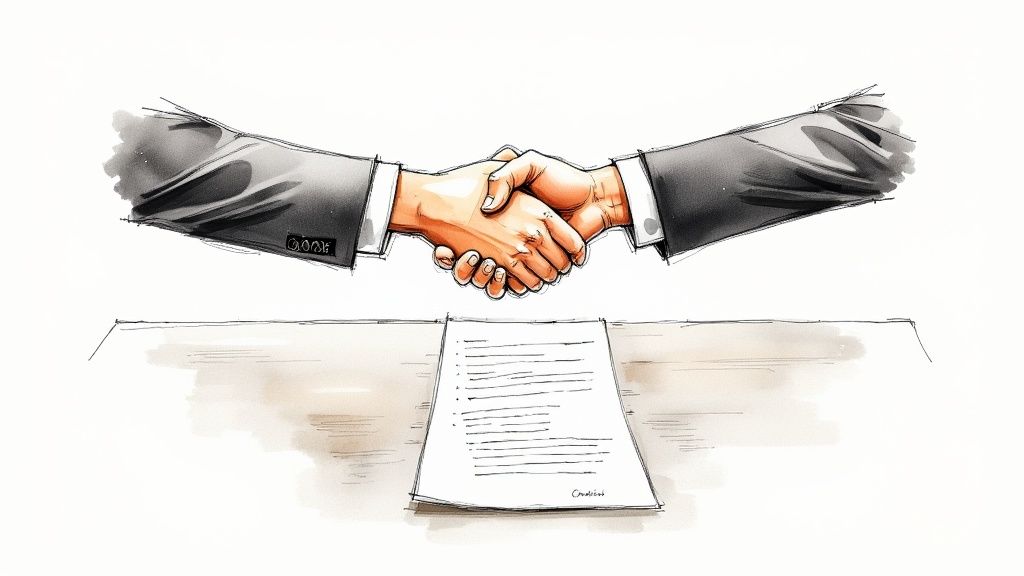
Getting that verbal "yes" from a potential sponsor feels fantastic, but hold the celebration for just a moment. You haven't crossed the finish line yet. Now comes the crucial part: negotiation. This is where you'll hammer out the details and turn a promising conversation into a rock-solid, legally binding partnership.
The goal here isn't to "win." It's to build a win-win scenario where you protect your organization's interests while making sure the sponsor feels they’re getting incredible value. A well-crafted agreement prevents future headaches and lays the groundwork for a partnership that could last for years.
Before any contracts are drafted, get on a call. Trust me, a real-time conversation is infinitely more productive than a drawn-out email chain of redlined documents. This call is your chance to really understand their main objectives, explain the reasoning behind your requests, and find common ground on the big-ticket items.
Walk into that conversation prepared. Know your non-negotiables—the absolute must-haves for your event or project. Just as important, identify the areas where you can be flexible. Having this clarity beforehand gives you the confidence to guide the discussion and get creative if you hit a roadblock.
Think of negotiation not as a battle, but as a collaborative problem-solving session. You’re both on the same team, trying to build the strongest possible partnership.
Don’t forget that you have leverage. The sponsorship market is red-hot. Consider the sports sponsorship market alone, which was valued at $63.1 billion in 2021 and is on track to hit $109.1 billion by 2030. Companies are eager to invest in reaching engaged audiences, moving beyond just logo placements to more creative activations. Brands are using data to quantify sponsor ROI on pwc.com and they're willing to pay for genuine connection.
When you get to the written agreement, the devil is truly in the details. While I always recommend having a lawyer review the final document, understanding these core components will empower you to negotiate from a position of strength.
Deliverables and Activations: Get specific. Painfully specific. Don't just write "logo on website." Instead, detail "logo placement in the top-tier sponsor section of the event homepage for the full 12-month campaign period." List every single thing, from the number of social media shout-outs to speaking opportunities.
The Exclusivity Clause: This is a huge bargaining chip. Granting a sponsor exclusivity—meaning you won't partner with their direct competitors—is a premium benefit that justifies a higher price. Be sure to clearly define the "industry category" to avoid any confusion down the road.
Payment Schedule: Spell out the exact payment amounts and their due dates. A standard and fair approach is often 50% upon signing the contract and the final 50% at least 30 days before your event. A word of advice: never start delivering on your promises until that first payment has cleared.
Once the back-and-forth is done, you'll have a draft agreement. Go over it with a fine-tooth comb with your team and, ideally, your legal counsel. Make sure it perfectly mirrors every point you discussed and leaves no room for misinterpretation.
When both sides are happy, it’s time to sign on the dotted line. This makes the partnership official and legally binding. It’s a huge accomplishment, but the relationship-building has just begun. For a complete A-to-Z look at this entire journey, make sure to read our comprehensive guide on https://groupos.com/blog/how-to-get-sponsors.
One last thing—send a thank-you note. A simple, personal gesture goes a long way in reinforcing the partnership and kicking things off on a high note. You’ve successfully navigated the tricky waters of negotiation and secured a deal built on clarity, mutual respect, and a shared vision.
Stepping into the world of corporate sponsorship can feel like you're trying to crack a secret code. You’ve put in the work, you know your value, but there are always those nagging questions that can stop you in your tracks. Let's clear up some of the most common ones so you can keep moving forward with confidence.
Let me be blunt: you need to start way earlier than you think. The sweet spot is 9-12 months before your event or project kicks off.
I know, that sounds like a lifetime. But trust me, that buffer is your best friend. Big companies, especially the ones with deeper pockets, often lock in their marketing budgets a year in advance. If you show up in their inbox three months before your event, you haven't just missed the boat—the boat has already sailed, completed its voyage, and is back in port.
This long runway isn’t just about logistics. It’s about building a real relationship. It gives you time to have actual conversations, and it gives them time to plan meaningful marketing campaigns around your event, which makes you a much more valuable partner.
Easy. Sending a generic, one-size-fits-all proposal. It’s the fastest way to get your email deleted. Decision-makers see dozens of these, and a "copy-paste" pitch screams that you haven't done your homework.
Beyond that cardinal sin, here are a few other all-too-common errors I see:
Pricing your sponsorship packages is part art, part science. You can't just pick a number that feels right; you have to be able to justify it. First, calculate what it will actually cost you to deliver on your promises—think printing costs for banners, the price of a dedicated email blast, or booth setup fees. That's your floor.
Then, do a little competitive research. What are similar events or organizations in your space charging? This will give you a ballpark idea of what the market will bear. But the most important piece of the puzzle is the value of your audience. How many people will you reach? How engaged are they? What is your brand's reputation? That’s where the real value lies.
A great strategy is to create tiered packages. Think Platinum, Gold, and Silver. This gives companies with different budgets and goals an easy way to find a fit, making it much more likely you'll get a "yes."
Your job isn't done when the curtains close. A solid post-event report is how you prove ROI, and more importantly, it's your single best tool for securing a sponsorship renewal next year. This report is your tangible proof that their investment was a smart one.
Make sure it looks professional and is packed with data. Start with a quick executive summary of the event's success, then dive into the details.
Include things like:
Wrap it all up with a sincere, personal thank you. Reiterate how much you valued their partnership and open the door for a conversation about next year. This is what turns a one-time sponsor into a long-term partner.
Juggling sponsorships, members, and event logistics is a lot to handle. GroupOS is an all-in-one platform built to make it all easier. It helps you create dedicated pages for sponsors, streamline communication, and track the analytics you need to prove your value. Learn more about how GroupOS can help.


